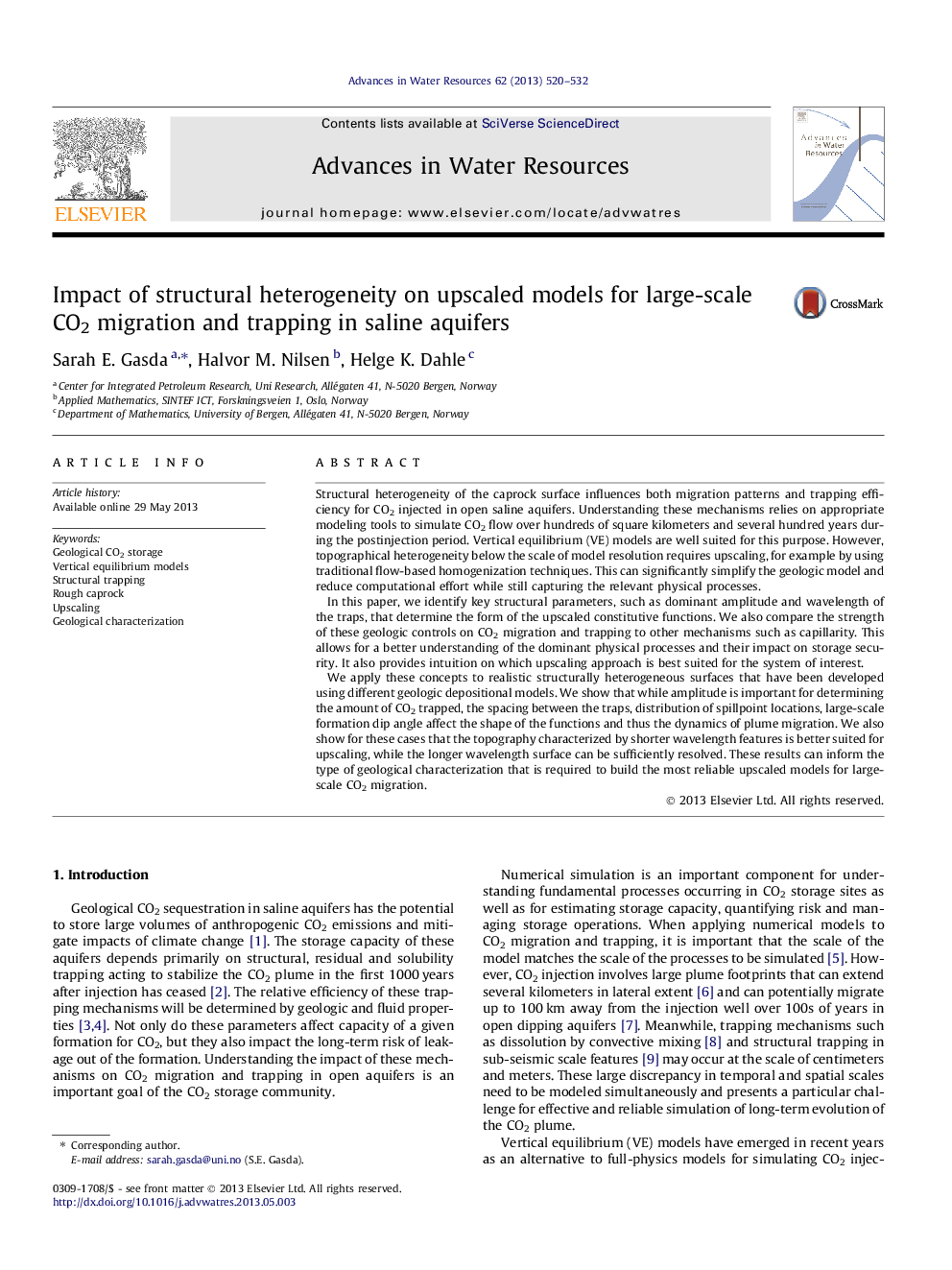| Article ID | Journal | Published Year | Pages | File Type |
|---|---|---|---|---|
| 6381142 | Advances in Water Resources | 2013 | 13 Pages |
Abstract
We apply these concepts to realistic structurally heterogeneous surfaces that have been developed using different geologic depositional models. We show that while amplitude is important for determining the amount of CO2 trapped, the spacing between the traps, distribution of spillpoint locations, large-scale formation dip angle affect the shape of the functions and thus the dynamics of plume migration. We also show for these cases that the topography characterized by shorter wavelength features is better suited for upscaling, while the longer wavelength surface can be sufficiently resolved. These results can inform the type of geological characterization that is required to build the most reliable upscaled models for large-scale CO2 migration.
Related Topics
Physical Sciences and Engineering
Earth and Planetary Sciences
Earth-Surface Processes
Authors
Sarah E. Gasda, Halvor M. Nilsen, Helge K. Dahle,
